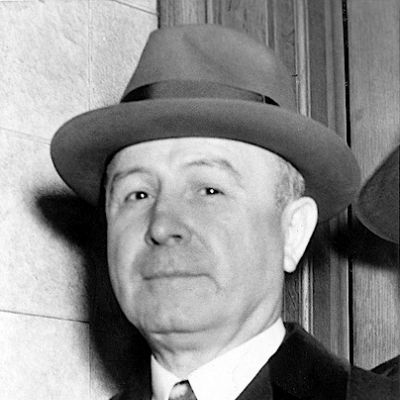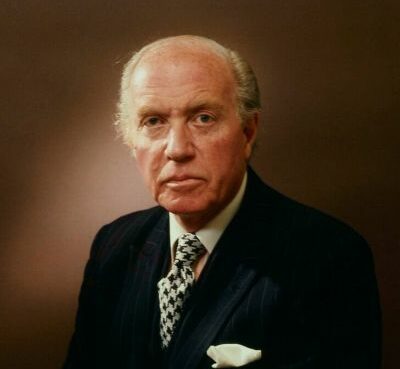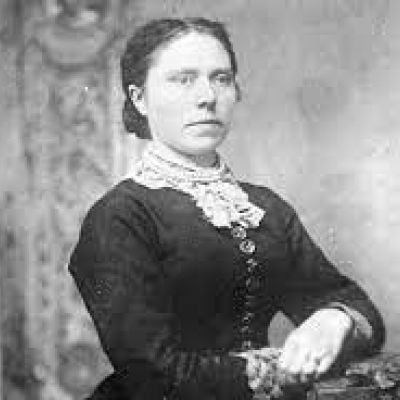Johnny Torrio- Biography
Page Contents
Johnny Torrio was an Italian-American gangster commonly regarded as the father of organized crime in the United States. He was also known as ‘The Fox,’ ‘Papa Johnny,’ and ‘The Immune’ for his shrewdness, leadership, and business ability. Giovanni Torrio was born in Italy and moved to New York with his widowed mother when he was two years old. His stepfather’s bootlegging enterprise introduced him to the world of crime while he was in his teens.
He eventually became the boss of the James Street Gang, a gang of petty criminals. Johnny traveled to Chicago at the invitation of his aunt, who managed hundred of brothels and saloons with her husband Big Jim, eventually taking over their business. He not only enhanced the existing infrastructure, but he also began bootlegging, generating enormous fortune. To avoid turf wars, he convened with other gang lords and devised a territory system. Even when he retired and handed over his business to his protégé, Al Capone, he maintained his status as an ‘older statesman’ among other gangsters.
Johnny Torrio- Birth, Age, Ethnicity, Siblings, Education
Johnny Torrio, also known as Donato, was born Giovanni Torrio on January 20, 1882, in Irsina, a town near Matera in Southern Italy at the time. When Giovanni was two years old, his father, Tommaso Torrio, a railway employee, perished in a labor accident.
Soon after his father’s death, his mother, Maria Carluccio, immigrated to the United States with her only child, Giovanni. They began to live in a slum on Manhattan’s Lower East Side, New York City. His name was altered to a more Americanized Johnny while he was residing here.
Maria met and married Salvatore Caputo, a grocery shop owner, and bootlegger, in New York. Johnny eventually got three half-siblings, Nicholas, Isabella, and Grace, from his mother’s second marriage to Carluccio.
John began working as a porter in his stepfather’s grocery store, which was actually a front for his bootlegging enterprise when he was very young. As a result, he was exposed to criminal activity at a young age. It is unknown whether he ever attended school.
Johnny Torrio- Relationship, Married Life
Johnny Torrio married Anna Theodosia Jacob while working for James Colosimo. He adored her and was completely committed to her. They didn’t have any children. Anna was first unaware of the true nature of his business. He was known as Mr. Langley in society. She found out about his arrest in 1936 and made his pledge not to do anything wrong again, a commitment he honored until his death.
Torrio died of a heart attack on April 16, 1957, while waiting for a haircut in a barbershop. He was promptly sent to the neighboring Cumberland Hospital, where he died a few hours later. Johnny Torrio was laid to rest quietly in Green-Wood Cemetery in Brooklyn, New York. It was little attended, and the press only learned about it three weeks later.
Johnny Torrio- Professional Career
Johnny Torrio joined the James Street Gang, a gang of petty thieves, while he was still in his teens. He eventually became the gang’s leader and gathered enough money to open a billiard parlor for the group. He gradually began to go into gambling, particularly number games.
By 1904, his business prowess had piqued the interest of another criminal lord headquartered in Lower Manhattan, Paul Kelly, the leader of the Five Point Gang. Torrio admired Kelly as well, and by 1905, the James Street Gang had been renamed Five Points Junior and had begun receiving training in organized crime.
Kelly instructed Torrio to dress conservatively and avoid cursing. He also advised him to establish a legal firm as a front. Torrio rose up the ranks to become Kelly’s number two. In addition to working for Kelly, he established a respectable operation of his own at the Brooklyn pier. Behind it, he began operating illegal businesses such as loan sharking, which involved making loans at exorbitant interest rates, bookmaking, opium trafficking, hijacking, and brothel running.
Torrio enlisted the help of neighborhood kids, one of which was a boy named Alphonse Gabriel Capone, to conduct errands for him. Later known as Al Capone, he rapidly gained Torrio’s trust and soon became a member of Five Point Junior, quickly progressing to Five Point Gang.
In Chicago, Big Jim was in charge
Johnny Torrio moved to Chicago at the invitation of his aunt, Victoria Moresco, in 1909. She and her husband, James Colosimo, also known as Big Jim, owned over a hundred brothels and saloons in Chicago, as well as a nightclub.
The Colosimos were being blackmailed by a group of extortionists now that they had made it big, and they wanted Torrio to take care of it. When Torrio arrived in Chicago, he set up an appointment to have the money paid; however, when the extortionists arrived to collect it, he had them killed down.
Torrio began running brothels for his uncle and aunt after defeating the extortionists, establishing his roots in Chicago. Soon after, he began extending his brothel business by acquiring virgins through White Slave Trades. He also arranged the muscle force required to manage an enterprise of this size. When two women fled from the brothels and threatened to report him, he dispatched two of his men, who disguised themselves as undercover agents and killed them down before they could testify against him.
Torrio operated at Colosimo’s Café at 2126 South Wabash Avenue for the first ten years. He eventually opened a new tavern and a gambling den. In 1919, he opened ‘The Four Deuces’ brothel at 2222 South Wabash Avenue and began operating from there. In 1919, he also brought Al Capone to Chicago. Capone had previously worked as a bartender at the Harvard Inn, a Coney Island tavern run by Frankie Yale. He now works as a bouncer for Torrio in one of his brothels, ‘The Four Deuces,’ before being promoted to manager.
When prohibition went into effect on January 17, 1920, Torrio regarded bootlegging as a lucrative opportunity. But Colosimo was adamant about avoiding starting a new business. Furthermore, he had already divorced Torrio’s aunt, Victoria Moresco, and had married a soprano named Dale Winter on April 17, 1920. On May 11, 1920, Torrio informed Colosimo that a cargo of booze was on its way to his café. When Colosimo went there to collect it, he was shot and killed. Although it was never determined who committed the murder, Torrio was widely assumed to be the perpetrator.
Crime lord
Johnny Torrio took over Colosimo’s massive enterprise after his death in 1920 and quickly plunged into bootlegging. He also consolidated his organization, which had previously been known as the South Side Mob. It would later be known as the Chicago Outfit. In 1920, he gathered with all other Chicago bootleggers, including Dean O’Banion, the boss of the North Side Gang, to devise a territory structure to avoid bloody turf wars. The land was partitioned into a number of territories after they all agreed.
While O’Banion was granted charge of the North Side, Torrio was given control of the Loop and a portion of the South Side. The deal lasted until 1923, when Cicero, a Chicago suburb, had developed into a gold mine for the South Side, and O’Banion demanded a portion of the profits. Torrio handed O’Banio some bear rights as well as cuts from Hawthorne Smoke Shop, later known as The Ship, to appease him. However, O’Banio soon began to clash with other gang leaders, culminating in the revival of territorial wars between different gangs.
O’Banio also betrayed Torrio in a brewery deal, resulting in Torrio’s incarceration and significant financial loss. Torrio eventually lost patience and ordered his execution. As a result, O’Banio was assassinated on November 10, 1924, while cutting chrysanthemums in Schofield’s, his North Side flower business.
Following O’Banio’s killing, the North Side and the Chicago Outfit engaged in a brutal turf war. On January 24, 1925, O’Banio’s henchman, Hymie Weiss, Vincent Drucci, and Bugs, were assassinated. Moran attacked Torrio on his way home after shopping, badly injuring him in the mouth, lungs, groin, legs, and abdomen.
Resignation from Active Duty
Although Johnny Torrio survived the attack, he was gravely injured and required emergency surgery. While he recovered from the assassination attempt, Al Capone’s men guarded him around the clock to ensure that no other assassination attempts were made.
Torrio upheld the gangland ethic of omertà throughout, which included refusing to cooperate with authorities and remaining completely silent, refusing to give the names of the attackers. After being released from the hospital, he was sentenced to one year in prison for violating the prohibition.
Torrio opted to retire after being released from prison. He went for Italy with his mother and wife in late 1925, handing over his kingdom to Al Capone. He also went to France. Although he did not personally participate in mafia activities in Italy, he was obliged to return to the United States in 1928 as Mussolini increased pressure on them. Here, he invested in real estate and profited handsomely. He then started a licensed liquor distribution company as well.
Concurrently with his legitimate business, he assisted in the formation of the ‘Big Seven,’ a group of seven mafia organizations operating on the east coast of the United States. It included prominent gangsters like Lucky Luciano, Longy Zwillman, Joe Adonis, Frank Costello, and Meyer Lansky. Torrio attended a gathering of mafia officials in Atlantic City, New Jersey, in May 1929. In this speech, he recommended establishing a pan-American organization based on the same principles as the ‘Big Seven.’ This resulted in the formation of a multi-ethnic confederation known as the ‘National Crime Syndicate.’
Torrio paid $62,000 for the Prendergast & Davies Company, LTD. in the early 1930s. Despite the fact that it was a legal business, he kept his name off the official record for tax purposes. However, a competitor reported him, and the tax authorities quickly launched an investigation into him. On October 24, 1935, a Jewish American mobster named Dutch Schultz was shot, and as he lay dying, he whispered Torrio’s name several times, which piqued the police’s interest. Torrio was concerned as a result of this, as well as the income tax investigation.
By 1936, Torrio had learned that he would be charged for avoiding approximately $86,000 in income taxes. He has now opted to relocate to Brazil. He went to the White Plains Post Office on April 22, 1936, to pick up his passport. An Internal Revenue agent apprehended him there.
Johnny Torrio was held on a $100,000 bond in the Federal Detention House in Manhattan. Two more charges were added when his wife got him out. She bailed him out once more.
On March 29, 1939, the trial came to a close. Torrio was sentenced to two and a half years in prison and an $86,000 fine. When he was released from prison in 1941, he completely retired from criminal activities and focused on his real estate company, spending his days in Brooklyn, St. Petersburg, Florida, and Cincinnati.
Also Read, Chloepowell, Incinders, and Soupachu.





